Notice: Undefined variable: page in /home/vrxdg1855sn3/public_html/wp-content/themes/72tree/content.php on line 15
Notice: Trying to get property 'ID' of non-object in /home/vrxdg1855sn3/public_html/wp-content/themes/72tree/content.php on line 15
Caring for and Planting a Potted Christmas Tree
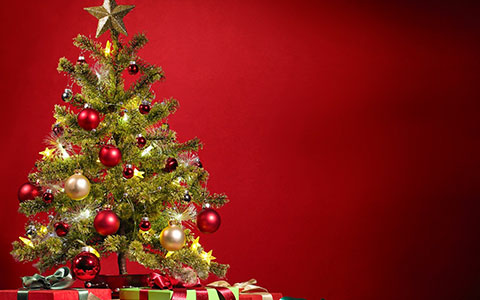
With some simple steps, you can avoid significantly damaging your potted Christmas tree while it’s in your home. Likewise, by taking a few essential measures into consideration, your potted Christmas tree will thrive outside for years to come.
72tree.com assembled the following list of care and planting tips for your potted Christmas tree.
Potted Christmas Tree Selection
Responsible tree care begins with your tree selection. The following will help you get the right tree for your holiday enjoyment and avoid transporting a potential infestation or tree disease to your landscape:
• Some highly sought after species for potted Christmas trees include Fraser fir, white pine, and Norway, white and Colorado blue spruces.
• The species should be adapted to your USDA hardiness zone
• The root ball or soil in the pot should be moist
• The tree should appear sturdy with even growth
• There should be no signs of disease or infestation
• Little to no needles should fall off the tree when shaken
• Branches and needles should be pliable when run through your hand
• Look for potted trees that are kept outside (these trees should be in a state of dormancy)
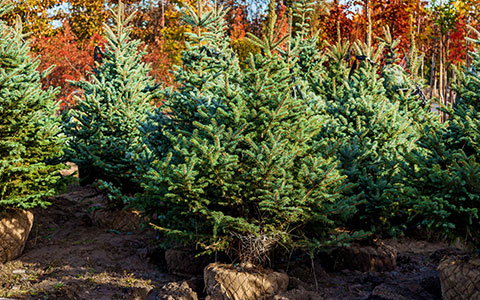
If the tree is purchased from a climate-controlled nursery, avoid trees with new growth at the end of its stems. This new growth (triggered by the warmth indoors) will appear bright green. It will not have time to harden before being planted outside and exposed to winter temperatures after the holiday.
Visit 72tree.com/trees-shrubs-usda-hardiness-zone-map/ to learn more about the hardiness zones and how to determine your precise zone.
Tip: Look for trees in the 4 to 5-foot range. Since these trees still have their roots and surrounding soil, they will be much heavier than live cut trees. The taller the tree, the more roots and soil are required. Thus, the shorter the tree, the more manageable it will be during transport and planting.
How To Bring Your Potted Christmas Tree Indoors
Now that you have the perfect tree for your holiday celebration, use the following steps to acclimate the tree to come indoors:
Garage Your Tree – When you arrive home, leave your tree in the garage for two to three days. This will allow the tree to get used to warmer temperatures and avoid stressing it.
Stressed trees are highly susceptible to successful insect and disease attacks.
Digging A Hole for the Tree – While the tree is acclimating to go indoors, take some time to prepare its planting location outdoors. Take the following into consideration:
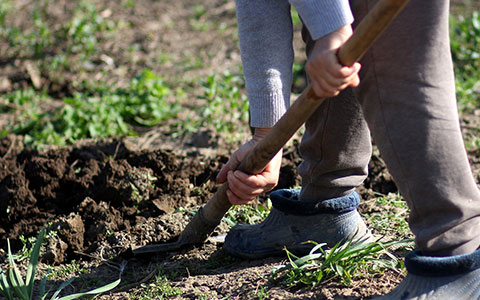
Know the species height and width at maturity. Your tree is likely capable of reaching heights of 80 to 100-feet and width of 20-feet or more. Choose a location away from power lines and at least 30-feet from any structures or paved areas in your landscape.
Now that you have a location, dig a hole 3-feet across and as deep as the root ball or pot. Keep the dug up soil in the garage (protected from freezing), fill the hole with straw, and cover it with wooden planks. This will help you avoid significant delays in case the ground freezes.
Inspect Your Tree – Once acclimated, thoroughly inspect your tree once more for signs of insect infestation before bringing it indoors.
Some of the potential insect passengers you may find include:
• Aphids
• Bark Beetles
• Scale
• Lanternflies
• Stink Bugs
Visit 72tree.com/preventing-eliminating-christmas-tree-bugs/ to read more about Christmas tree bug control and prevention.
Timing and Duration – Potted Christmas trees should be brought indoors as close to your holiday celebration as possible. Unlike cut Christmas trees, potted trees will react to the warmer temperature indoors and begin to exit dormancy.
From the time your tree is brought indoors, you have about ten days before you will need to get it back outside. While your tree is indoors, observe the following to promote its health:
• Place the tree in a location far from heat sources, including fireplaces, vents, portable heaters, stoves, etc.
• Use led lights on the tree to avoid drying it out. If conventional light strings are used, be sure to limit the time they are turned on.
• Water the tree daily with 30 to 40 ice cubes placed on the root ball or the soil in the pot.
• Help the tree remain in dormancy by putting it in a cooler room with an abundance of natural light.
Tip: If you detect any new growth or signs of sprouting at any time, remove all of the decorations and lighting. It’s time to get it outside.
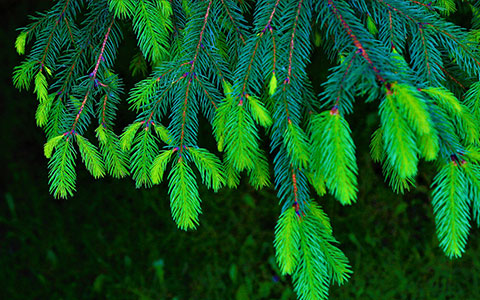
How To Take Your Potted Christmas Tree Outdoors
The same way you acclimated your tree to come indoors, you will need to acclimate it to go outdoors. You can accomplish this by removing all decorations and lighting, then moving it back to the garage for two to three days.
Planting Your Christmas Tree
The following steps will help you successfully plant your acclimated tree:
• Uncover the hole you previously dug and remove the straw
• Move the saved soil back to the side of the hole
• Fill the hole with water, let the water soak into the ground, and repeat
• Move the tree to the edge of the hole and gently lay it on its side (with the top of the tree pointing away from the hole)
• Carefully remove the pot (keep the soil intact)
• If the root ball is wrapped in burlap, leave the burlap on for now
• Slide the tree towards the center of the hole, so the root ball is at the center of the hole
• Raise the tree into its position (remove the burlap now)
• Loosen the soil in the root ball and free any circling roots
• Fill in the hole making sure the root flare does not get buried
• For stability, it may be necessary to stake the tree for the first 6 months
• Water the tree and add a 3-inch layer of organic mulch around the entire base without covering any part of the trunk
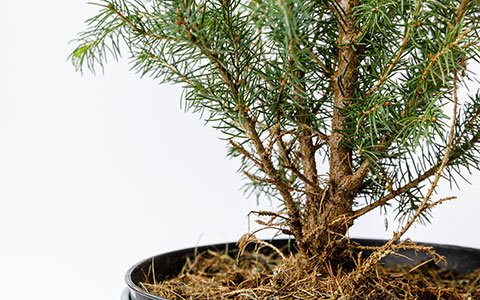
For more tips and guidance on successfully planting a tree, read 72tree.com/beginners-guide-tree-planting/
Note: If the ground has frozen, there is snow accumulation, or if your tree sprouted new growth and began to bud, don’t plant it just yet. Keep it and continue caring for it in the garage until the threat of freezing temperatures has passed.
Potted Christmas Tree Care And Planting
In this article, you discovered what it takes to care for a potted Christmas tree and plant it when your holiday celebrations are over.
By properly acclimating and caring for your potted tree, you can keep it from harm’s way and enjoy its beauty for years to come.
By neglecting the needs of your potted Christmas tree, it will likely end up stressed and suffering permanent damage.
Sources:
content.ces.ncsu.edu/selection-and-care-of-living-christmas-trees
canr.msu.edu/news/living_christmas_trees_another_real_tree_option
bbg.org/news/is_a_potted_christmas_tree_a_good_idea
Notice: Undefined variable: page in /home/vrxdg1855sn3/public_html/wp-content/themes/72tree/content.php on line 15
Notice: Trying to get property 'ID' of non-object in /home/vrxdg1855sn3/public_html/wp-content/themes/72tree/content.php on line 15
Preventing and Eliminating Christmas Tree Bugs
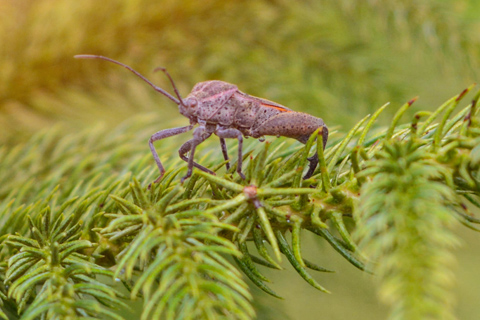
The Christmas tree is the pinnacle of holiday decorating but can also be a nightmare when bugs hitch a ride on the tree into your home.
Infested Christmas trees present a series of problems for the homes and neighborhoods they decorate. Pest control and prevention are essential measures when putting up a live tree for the holidays.
72tree.com collected information on the bugs that can be found on Christmas trees, how to prevent the buying of an infested tree, eliminating any insects found on the tree, and how to properly dispose of the tree.
Bugs on Christmas Trees
When you go to your local Christmas tree lot, keep in mind that just a few days prior, those trees were cut down from a Christmas tree farm or a forest.
Insects may have nested in or laid eggs on these trees. The following are some of the insect species you may encounter living or hatching in your Christmas tree:
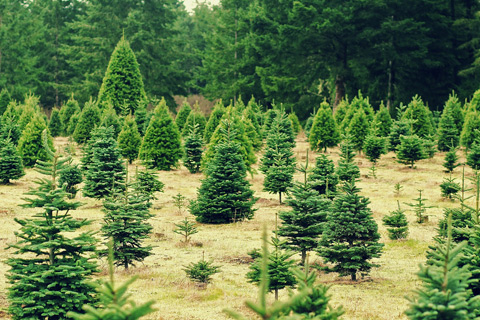
• Aphids
• Spiders
• Bark Beetles
• Mites
• Scale
• Needle Scale
• Mantises
• Spotted Lanternflies
• Sawfly
• Adelgids
• Stink Bugs
Note: Store-bought wreaths and swags made from live tree stems may travel thousands of miles from where they originated (potentially exposing your ecosystem to a new or invasive insect species). During the manufacturing and packing processes, bugs and the eggs they lay can easily be overlooked.
How To Prevent Bugs on your Christmas Tree
You can prevent bringing bugs into your home on a Christmas tree by following a few easy steps:
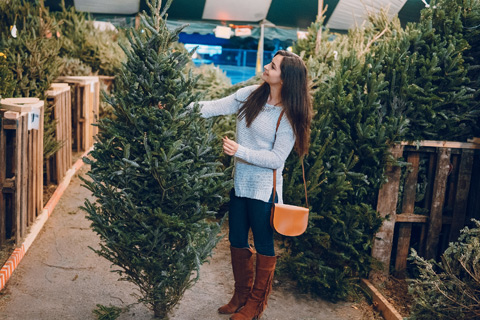
Right Time to Shop – Do not shop for a Christmas tree at night. It is easier to spot insects and eggs during the daytime.
Inspect the Under Side of Branches – Lay the tree down and get an up-close look at the underside of the branches and the trunk. Pay particular attention to the lower branches. You are looking for:
• Visible Insects
• Red or Brown Dots (Mites)
• Clusters of Eggs (Mantises and Lanternflies)
• What Appear to Be Snowflakes (Adelgids)
• White or Red Dots on Needles (Scale)
• Brown Cocoons (Sawfly)
• Small Holes in Trunk (Bark Beetle)
• Sawdust Trails (Bark Beetle)
Let It Stand – Attach the base and let the tree stand in the garage for a day or two. As a preventative measure, apply neem oil or insecticidal soap to the tree before moving it inside and decorating it.
How To Get Rid of Christmas Tree Insects
One of the most common insects found on Christmas trees is aphids. Killing aphids and other insects can be accomplished by spraying the tree with non-toxic neem oil or a homemade insecticidal soaps. Read more about killing aphids.
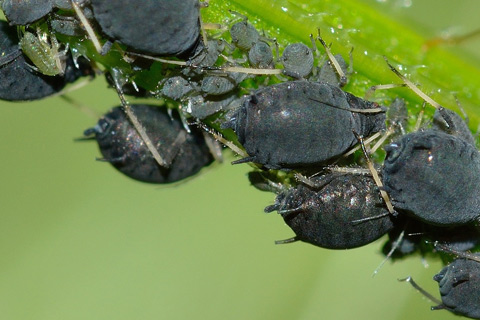
For the most part, newly hatched insects and spiders quickly expire from desiccation (they dry out). However, there are those that do survive.
Beetles, mantises, spotted lanternflies, and sawflies can leave the tree and potentially make their way outside. Again, the application of neem oil and insecticidal soap can be used to control these insects.
If you spot insects or eggs on your tree, DO NOT use commercial aerosol bug sprays. There is no necessity to expose yourself and your loved ones to these harsh chemicals. And, as many of them are flammable, you risk having the tree and your home go up in flames.
For pests that have fallen to the floor or are on your furniture, avoid stepping on them or crushing them (they can leave stains, and some insects have a putrid smell).
Use a vacuum cleaner that doesn’t have a beater bar to suck them up. Then treat the bag or the receptacle with neem oil or insecticidal soap before disposing of them.
How To Dispose of a Christmas Tree
To help preserve the ecosystem in your region, avoid placing the used tree on brush piles or compost heaps. Invasive insects and diseases are able to escape into landscapes and neighboring forests, becoming established, and upsetting the native ecosystem.
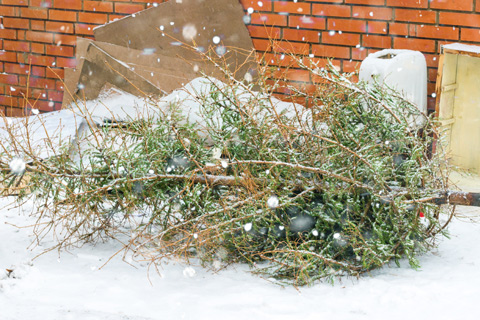
When you take steps to properly purchase, treat, and dispose of a Christmas tree, these risks are dramatically reduced.
Many municipalities and counties nationwide have pickup programs established to retrieve your tree at curbside and properly dispose of it.
If you miss this service or it isn’t available, you can take the tree to a solid waste facility, dump, or landfill. This will keep any pests that may remain in the tree from spreading.
Bug-Free Christmas Tree for the Holiday Season
An infested Christmas tree inside your home probably wasn’t on your wish-list for this holiday season. When bugs hitch a ride into your home, you need to know how to handle them efficiently.
From this article, you have discovered which bugs can be found on a Christmas tree, what to look for when purchasing the tree, how to eliminate any bugs on the tree, and how to properly dispose of the tree once the season is over.
Your home, neighborhood, and neighboring forest are all at risk when the poor management of a Christmas tree infestation allows foreign or invasive insects to disrupt a native ecosystem. Pest control and prevention should be one of the main concerns of a live tree in your home for the holidays.
Sources:
https://hortnews.extension.iastate.edu/insects-christmas-trees
https://christmastrees.ces.ncsu.edu/badbugs/
https://extension.unh.edu/resources/files/resource000986_rep2299.pdf
https://aces.nmsu.edu/ces/yard/2000/122300.html
